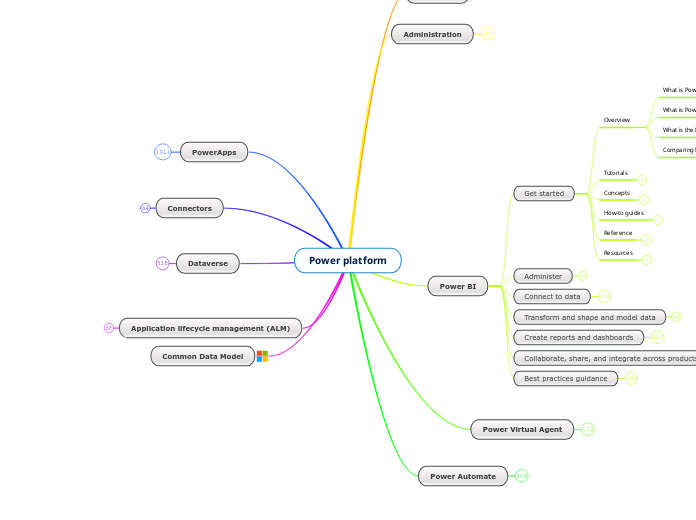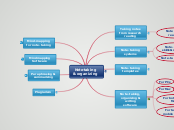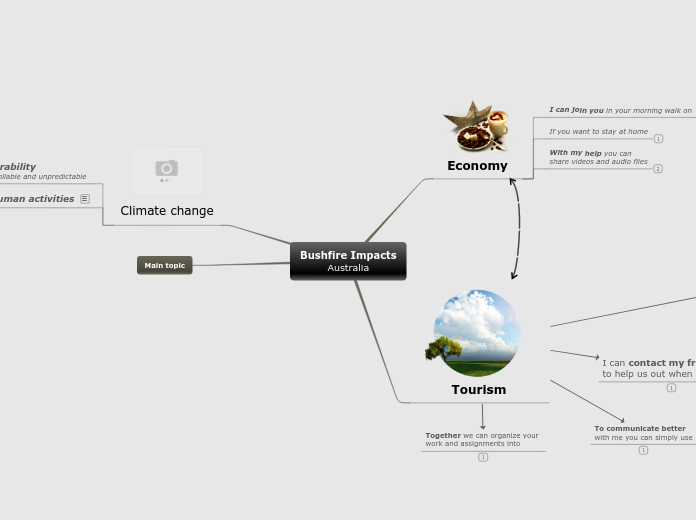Creative Practice in a Digital Context
This mind map is introducing a task with some elementary techniques for cultivating our own literary creativity. In developing this creativity, we will learn to explore and use some simple, online tools for generating works of creative, artistic expression in response to a procedural constraint. We will also learn basic ideas about aesthetics. Therefore, we are going to learn by doing: hence, dedicated creation and editorial revision also constitute an important component.
This is the practice of teaching how to write in a fun, modern, playful way, yet not losing the important message and purpose of writing itself.
Format Changing
Ideogramic Writing
READ
“Language as Material” in Uncreative Writing (by Kenneth Goldsmith): 34-62.
“Lossy and Jaggy” in Wasting Time on the Internet (by Kenneth Goldsmith): 169-184.
VIEW
Tom’s Diner (by Suzanne Vega)
https://www.youtube.com/watch?v=DkYPge6ZKSQ
Ghost in the MP3 (by Ryan Maguire)
http://theghostinthemp3.com/
First GIF
http://i.imgur.com/Ccra8e5.gif
Can Dialectics Break Bricks? (by René Viénet)
http://vimeo.com/60948078
SURF
Marcel Duchamp (by Language Removal Services)
http://www.languageremoval.com/player-interface-column-icon-overlay.html
Robotype
http://www.robotype.net/herramienta.php
Type Is Art
http://www.typeisart.com/
HRQR Code
http://hrqr.org/
GIF Maker
http://gifmaker.me/
Using one of the four toys above (Robotype, Type Is Art, HRQR Code, GIF Maker), create a work of asemic, visual poetry so as to illustrate the “materiality” of language itself. How might you use these toys inventively “against the grain” of their shortcomings so as to generate works of art? How might you generate images worthy of circulation in the digital network of the Web?
Photogenic Writing
READ
“Revenge of the Text” in Uncreative Writing (by Kenneth Goldsmith): 14-33.
“I Shoot Therefore I Am” in Wasting Time on the Internet (by Kenneth Goldsmith): 140-168.
VIEW
1984 (Surveillance Camera Players)
https://www.youtube.com/watch?v=RILTl8mxEnE
Jennifer in Paradise (by Constant Dullaart)
http://jennifer.ps/
SURF
Craigslist Mirrors (by Eric Oglander)
https://ericoglander.com/craigslist-mirrors
No Man’s Land (by Mishka Henner)
https://mishkahenner.com/no-man-s-land
Street With a View (by Ben Kinsley and Robin Hewlett)
http://benkinsley.com/street-with-a-view/
New Portraits (by Richard Prince)
http://www.richardprince.com/exhibitions/new-portraits/
I’m Google (by Dina Kelberman)
http://dinakelberman.tumblr.com/
Using the technique described by Kenneth Goldsmith in “Revenge of the Text,” change the “filename extensions” on computer files to either “.txt” or “.raw” and after opening these files, manipulate them by cutting and pasting other texts into them at different locations; then re-open this corrupted file under its original “filename extension” in order to evaluate the results of this experiment. Choose your finest result from this repeated exercise, and then, in 150 words, explain your procedure, providing a rationale for your choice of these files, explaining what you might have learned from this task (doing so with reference to ideas used by Kenneth Goldsmith). If you have difficulty viewing the extensions on the filenames of your files in either your PC or your Mac, then you can consult these websites (or use Google to find an appropriate alternative to them) in order to reset the parameters of your computer:
For Mac: https://www.mactrast.com/2018/01/show-file-extensions-macos-finder/
For PC: https://www.computerhope.com/issues/ch000573.htm
Listing up!
Performable Writing
READ
“Anticipating Instability” in Uncreative Writing (by Kenneth Goldsmith): 63-82.
“The Revolution Will Be Mobilized” in Wasting Time on the Internet (by Kenneth Goldsmith): 216-222.
“101 Ways to Waste Time on the Internet” in Wasting Time on the Internet (by Kenneth Goldsmith): 223-236.
Excerpts from Grapefruit (by Yoko Ono)
http://monoskop.org/images/2/2a/Ono_Yoko_Grapefruit_A_Book_of_Instructions_and_Drawings_by_Yoko_Ono_S_and_S_edition_excerpt.pdf
HEAR
Rouge (by Henri Chopin)
https://www.youtube.com/watch?v=qvaV9n3eBn8
“Rouge, Rouge…” in Four Languages (by Karl Stockhausen)
https://www.youtube.com/watch?v=rmWHQw8R8P8
Flagging (by Stock, Hausen und Walkman)
https://www.youtube.com/watch?v=RDPHRjUzOq8
Excerpt from The Tapeworm Foundry (by Darren Wershler)
http://media.sas.upenn.edu/pennsound/authors/Wershler-Henry/Wershler-Henry-Darren_04_From-The-Tapeworm-Foundry_DH_NY_5-12-01.mp3
SURF
Do It (by Hans Ulrich Obrist)
http://www.e-flux.com/projects/do_it/manuals/0_manual.html
The Tapeworm Foundry (by Darren Wershler)
http://www.ubu.com/ubu/pdf/wershler_tapeworm.pdf
Using Grapefruit by Yoko Ono as your model, write FOUR different sets of instructions for creating an imaginative performance of an artwork—each one, like a kind of “recipe” for potential enactment. Each “event score” must be approximately 50 words of prose (for a total of 200 words). The scores do not have to be “possible” in reality, and they may in fact represent “recipes” for action, whose performance, as a “happening,” can only take place in the imagination. Try to ensure that your instructions utilize only language that remains concrete, specific, and dynamic (without using the verb “to be”). Try to be as uncanny or as unusual as possible in your suggested happening, but be sure that your instructions nevertheless appear simple in tone, describing actions that might, in fact, represent a daily chore or a banal event—something that, through performance in this context lends the activity a much more artful, poetic significance. You are being marked upon your ability to show inventiveness in your plans for these tasks, so be artful in your concept, imagining an, as yet, unrealized experience that you might like to see created.
Documentary Writing
READ
“Toward a Poetics of Hyperrealism” in Uncreative Writing (by Kenneth Goldsmith): 83-108
“Our Browser History Is the New Memoir” in Wasting Time on the Internet (by Kenneth Goldsmith): 75-88.
“First, My Motorola” (by Alexandra Nemerov)
https://www.poetryfoundation.org/harriet/2007/06/pro-consumerist-poet-1
Excerpt from Your Country Is Great (by Ara Shirinyan)
http://wagsrevue.com/Download/Issue_4/Your%20Country%20is%20Great.pdf
SURF
Rising (by Jay Jadick)
Compose a text that documents some aspect of your digital history over the course of 24 hours (perhaps listing every term searched in the Google search engine or every title of a text read online via Twitter, or the length of each video watched on YouTube). What story does such a list reveal about yourself? You might also choose to provide a photo album, recording some attribute of your observations over the course of the day (photographing every doorway through which you pass, or every object picked up by your left hand, or every instance of the colour blue seen by you). You might record every instance of a capital H in the signage that you see — or every license plate from a car that you pass on the street. You can decide what feature of your life that you might want to document (so long as your choice remains manageable in its focus), but you must offer an explanation of your archival activity (using about 50 words to account for your project during these 24 hours). You can present your archive of either writing or imagery in the form of a PDF, with the information arranged according to an appealing, organized design.
Be sure to evaluate the quality of your results, using the lessons learned in class about specific, concrete details and dynamic, uncanny actions. Do something interesting that produces a surprising revelation.
Put things together
Memeologic Writing
READ
“Seeding the Data Cloud” in Uncreative Writing (by Kenneth Goldsmith): 175-187.
“Dream Machines and Eternidays” in Wasting Time on the Internet (by Kenneth Goldsmith): 114-139.
VIEW
Bookstalls (by Joseph Cornell)
http://ubu.com/film/cornell_bookstalls.html
Excerpt from The Clock (by Christian Marclay)
http://quietube7.com/v.php/http://www.youtube.com/watch?v=qKHmj83VC78
Darren Wershler (by David Johnston)
https://vimeo.com/56973139
SURF
The Apostrophe Engine (by Darren Wershler and Bill Kennedy)
http://www.apostropheengine.ca/
Abstract Comics
http://abstractcomics.blogspot.com/
Using samples of gridded imagery from the website for Abstract Comics, as your model, fill a 4 x 4 grid with 16 surreal images, juxtaposed in a manner that might call to mind the Surrealism of the boxes built by Joseph Cornell. You can use any software for designing graphic imagery to complete this task — (and you might find a free tool like Adobe Spark, useful for this purpose): https://spark.adobe.com/sp/login. You can also build this grid of images and motifs out of any exemplary pictures, abstract graphics, or coloured swatches, which might appeal to you — but you must select imagery from diverse sources, allowing them to interact artfully so as to evoke an “ambiance” of connotations, linked together into a kind of “collage” for poetic effect. You must then caption this image with a “story” consisting of exactly six words (which might again add allusiveness to the quality of your gridded imagery). You must avoid making any explicit allusion to the content of the “comic” itself — you are going to lose marks for this kind of self-reflexiveness; instead, use your complex of abstract imagery as a prompt for one line of poetry. You might also consider making a 3D-version of this exercise, by partitioning square frames into nine compartments (filling each one with objects, artfully arranged to evoke this poetic effect, much like a box by Joseph Cornell). You can then photograph the result, adding your caption to this “assemblage.”
Quantizable Writing
READ
From Uncreative Writing (by Kenneth Goldsmith):
Please read: “Chapter 10: The Inventory and the Ambient”
From Wasting Time on the Internet (by Kenneth Goldsmith):
Please read: “Chapter 04: Archiving Is the New Folk Art”
The Library of Babel (by Jorge Luis Borges)
http://jubal.westnet.com/hyperdiscordia/library_of_babel.html
Via (by Caroline Bergvall)
http://www.poetryfoundation.org/poem/245738
SURF
The Library of Babel (by Jonathan Basile)
https://libraryofbabel.info/
The Library of Babel (at Dicelog.com)
https://dicelog.com/babel
Joseph Stalin has supposedly proclaimed that “Quantity has a quality all its own.” With this premise in mind, do your best to evoke the large-scale sense of quantity on the Internet by depicting 1000 copies of the same item, artfully presented as an image to be displayed: for example, you might create a document consisting of 1000 copies of a single letter, arranged into a grid, or you might create a portrait of 1000 paper clips, arranged into a grid. What does such a quantity look like? — be it a cube of 1000 blue, LEGO bricks, a jar of 1000 green, jellybeans, or even a grid of 1000 copies of artwork by Andy Warhol. You can, of course, submit an example of 1000 digital objects — but your grade might improve if you can assemble an example of 1000 actual things, all counted out for display in one image that conveys the scale of this number. You can, of course, decide what item you might wish to represent for this numeric display of scale, but you must offer an explanation of your choice (using about 50 words to account for your activity), explaining what you might have learned from this act of either online reproduction or actual accumulation. Do not cheat by exhibiting a lot of something without having counted out its quantity.
Don't mention it!
Formalistic Writing
READ
“Infallible Processes” in Uncreative Writing (by Kenneth Goldsmith): 125-149.
“The Writer as Meme Machine” in Wasting Time on the Internet (by Kenneth Goldsmith): 185-215.
Black Box (by Jennifer Egan)
https://www.pastemagazine.com/articles/2012/06/black-box-by-jennifer-egan-tweet-by-tweet.html
Washington Crossing the Delaware (by David Shulman)
http://en.wikipedia.org/wiki/Washington_Crossing_the_Delaware_%28sonnet%29
VIEW
Workers Leaving the Googleplex (by Andrew Norman Wilson)
https://vimeo.com/15852288
Workers Leaving the Lumière Factory (by the Lumière Brothers)
https://www.youtube.com/watch?v=1hQvmTgan0Y&vl=en
An Internet Bard at Last! (by Steven Roggenbuck)
https://www.youtube.com/watch?v=YchvRnKwCbc
Rapping Without the Letter E (by Andrew Huang)
http://quietube6.com/v.php/http://www.youtube.com/watch?v=Z8-WtH4ujps
SURF
Ulysses in Barcodes (by Mike Lacher)
http://www.wonder-tonic.com/books2barcodes/read.php?title=ulysses
@horse_ebooks (by Jacob Bakkila)
https://twitter.com/horse_ebooks?lang=en
Gadsby (by Ernest Vincent Wright)
http://spinelessbooks.com/gadsby/
Anthony Etherin
https://twitter.com/anthony_etherin?lang=en
Anagram Generator
http://www.wordsmith.org/anagram/advanced.html
Letter Frequency Counter
https://www.mtholyoke.edu/courses/quenell/s2002/crypto/js/count.html
Write a text of 50 words (double-spaced), recounting a creative, but sensible, narrative on any topic of your choice, but do so without using the letters A and T (two of the most frequently occurring letters in English language). If you find this task of writing a short, quick story too challenging (because you are having difficulty generating a narrative on your own), try to retell the content of some other page-long text from your library, if you like, but do so, using the constraints of this exercise. If possible, try to refer to the rule when using the rule in your text. Be sure that, when you finish this exercise, you use the functionality of your word processor to “search” for any A or T in your document, just to ensure that you have not accidentally included one of these two forbidden letters in your submission to the class.
Select a brief, novel excerpt from a poem (say, a stanza of 25-30 words), then count the number of each letter appearing in this source. Using this fixed array of letters as a repertoire, recombine them exhaustively, as an anagram, to make another text. Make your new text refer in some way to the stylistic structure of the old text. Try to “comment” upon the original meanings of your source. You can use an online device to help you permute these letters: www.wordsmith.org/anagram/advanced.html. You can also use an online device to check your work: www.mtholyoke.edu/courses/quenell/s2002/crypto/js/count.html. You must include, with your anagram, a copy of the original material used to supply the letters, along with a tally of each letter appearing in the original, so that the instructor can check the exactitude of your work.
Descriptive Writing
READ
“Why Appropriation?” in Uncreative Writing (by Kenneth Goldsmith): 109-124.
“The Social Network” in Wasting Time on the Internet (by Kenneth Goldsmith): 29-49.
“Show, Don’t Tell” at Wikipedia
http://en.wikipedia.org/wiki/Show,_don’t_tell
VIEW
Kenneth Goldsmith on CNBC News
https://www.youtube.com/watch?v=HJUyx383gDw
SURF
Special Containment Procedures
http://www.scp-wiki.net/scp-series
Write a paragraph of 200 words (double-spaced), describing an anomalous discovery (something like the phenomena, depicted at the wiki for “Special Containment Procedures”). Apply the principles of effective, evocative description: i.e. use only concrete, specific nouns; use only dynamic, uncanny verbs. Avoid abstraction. Avoid the use of the verb “to be” altogether (since you can expect a penalty for each occurrence of this passive action in your description) — and make sure to minimize both your adjective usage and your adverbial usage. You can expect to receive merit for the inventiveness of your “weird thing.” What kind of emotion does your item evoke? Be concise. Be cogent. Be as detached as possible in your description, relying on the facts themselves to convey the “mood” of the work. Do not “tell” your reader about the item; instead, “show” the item, by appealing to all five senses.









